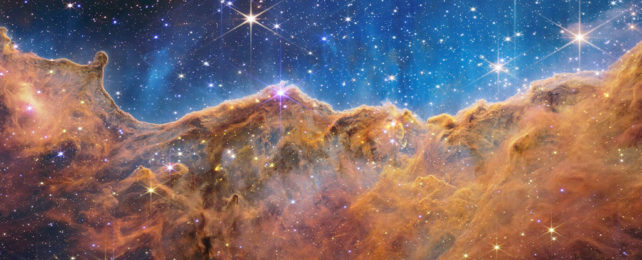The powerful James Webb Space Telescope is a mighty technological tool. Astrophysicists first conceived it over 20 years ago, and after many twists and turns, it was launched on December 25, 2021. Now it's in a halo orbit at the Sun-Earth L2 point, where it will hopefully continue operating for 20 years.
It's only been a few months since its first images were released, and it's already making progress in answering some of the Universe's most compelling questions.
In a newly-released image, the JWST peered deep inside massive clouds of gas and dust to watch young stars come to life in their stellar cocoons.
One of the JWST's first images was of the 'Cosmic Cliffs'. The Cosmic Cliffs are the edge of an active star-forming region in NGC 3324, a star cluster near the Carina Nebula.
The image shows the intense ultraviolet energy from hot young stars that shape the region, carving out cavernous gaps and leaving towers of gas that resist the radiation.
We all marveled at that image back in July, but scientists have dug into it to learn more about the region and the star-forming activity happening there. The Monthly Notices of the Royal Astronomical Society (MNRAS) published a paper presenting the results of their work.
It's titled "Deep diving off the 'Cosmic Cliffs': previously hidden outflows in NGC 3324 revealed by JWST." The lead author is astronomer Megan Reiter of Rice University in Houston, Texas.
The researchers examined the Webb image more closely and found over two dozen outflows from hot young stars that weren't previously seen. There is everything from "small fountains to burbling behemoths", according to a press release announcing the results. Some of the outflows extend several light-years from their star.
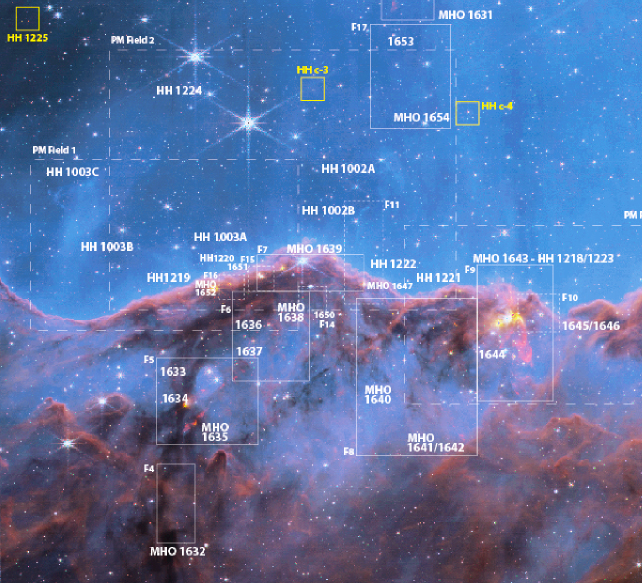
"What Webb gives us is a snapshot in time to see just how much star formation is going on in what may be a more typical corner of the universe that we haven't been able to see before," said Reiter.
The JWST's powerful infrared capabilities fueled this study. It can focus on molecular hydrogen, the main ingredient in stars. It's an excellent tracer for star-forming activity because as young stars grow, they take in the hydrogen and eject some of it in jets and polar outflows. It's called stellar feedback, and these jets carve out caverns in the clouds of gas and dust in the image.
Young, still-forming protostars are obscured from view by the dense molecular clouds that spawn them. But the JWST has the power to see inside these clouds. Scrutinizing young stars inside the clouds is one of the telescope's four main science objectives.
"Webb will be able to see right through and into massive clouds of dust that are opaque to visible-light observatories like Hubble, where stars and planetary systems are being born," a NASA website explained long before the telescope was completed and launched.
Now we're seeing all of those words come true.
"Jets like these are signposts for the most exciting part of the star formation process. We only see them during a brief window of time when the protostar is actively accreting," explained co-author Nathan Smith of the University of Arizona in Tucson.
The more astronomers learn about young stars forming elsewhere, the more they learn about how our own Sun formed and how our Solar System came to be. The JWST is expanding and deepening our understanding of the complex mechanisms behind their formation.
"It opens the door for what's going to be possible in terms of looking at these populations of newborn stars in fairly typical environments of the Universe that have been invisible up until the James Webb Space Telescope," added Reiter.
"Now we know where to look next to explore what variables are important for the formation of Sun-like stars."
The outflow jets in the earliest stages of star formation are challenging to observe because they happen inside a thick cloak of gas and only last for a brief period. The jets can flow for only a few thousand years, maybe ten thousand. Using the JWST's powerful filters, astronomers examined some of the jets and outflows the original Cosmic Cliffs image hinted at.
"In the image first released in July, you see hints of this activity, but these jets are only visible when you embark on that deep dive – dissecting data from each of the different filters and analyzing each area alone," shared team member Jon Morse of the California Institute of Technology in Pasadena.
"It's like finding buried treasure."
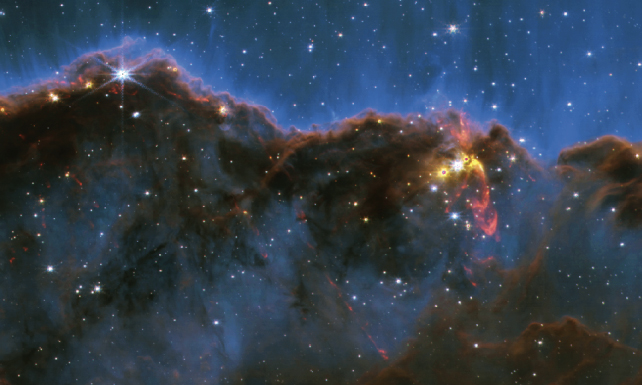
Understanding how young stars form is one of the primary quests in astrophysics today. The collective light from the first stars helped drive the reionization of the early Universe. Before the Epoch of Reionization, a dense fog of primordial gas obscured the Universe. During Reionization, light from young stars helped clear the haze from the Universe and allowed light to travel.
But astrophysicists don't know how these first stars formed, and addressing that question is one of the JWST's main science objectives. The JWST can see highly red-shifted objects from the Universe's early days, but it can't make out individual stars.
That's why these newly-released images are essential. Astrophysicists can't study the formation of the very first stars, but they can watch young stars forming today and work their way towards a more solid understanding of the Epoch of Reionization.
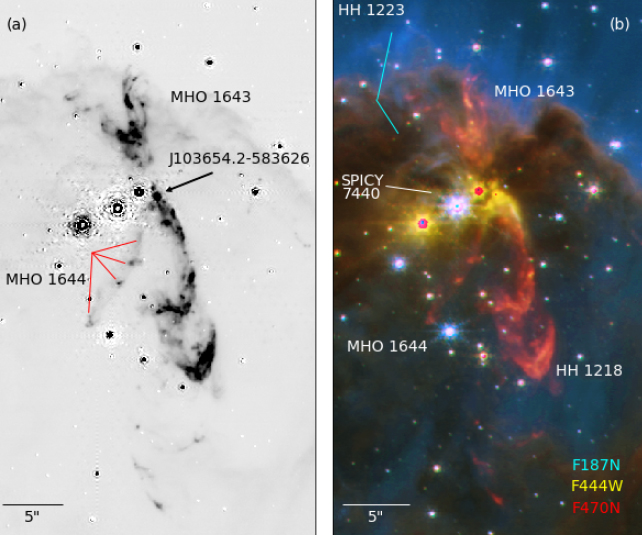
This isn't the first time astronomers have studied the young stars forming in this region. The Hubble looked at it 16 years ago.
And while the Hubble can't discern as much detail as the James Webb, it revealed enough for the study authors to compare how the jets and outflows have changed in the intervening years.
The measurements show the speed and direction in which the jets move, necessary details for understanding young stars.
These are Early Release Images (ERO) and are just the beginning of the JWST and its study of stellar formation.
"Future observations will allow quantitative analysis of the excitation, mass-loss rates, and velocities of these new flows," the authors write.
"As a relatively modest region of massive star formation, NGC 3324 offers a preview of what star formation studies with JWST may provide."
Future observations will be more thorough and detailed. They'll help shed even more light on one of the hottest topics in astronomy: how young stars drive planetary formation.
Feedback mechanisms mark young stars. They're still growing, and as they accrete gas from the clouds they're embedded in, they emit some of it back into their surroundings with their jets. The gas outflows help shape their protoplanetary disks and the formation of planets like ours.
A better understanding of these outflows leads to a better understanding of planets and, by complex extension, the likelihood of life appearing elsewhere.
Our Solar System likely formed in a cluster similar to the one in this study. Astronomers aren't certain yet, but by uncovering the details in NGC 3324, they may shed some light on our origins.
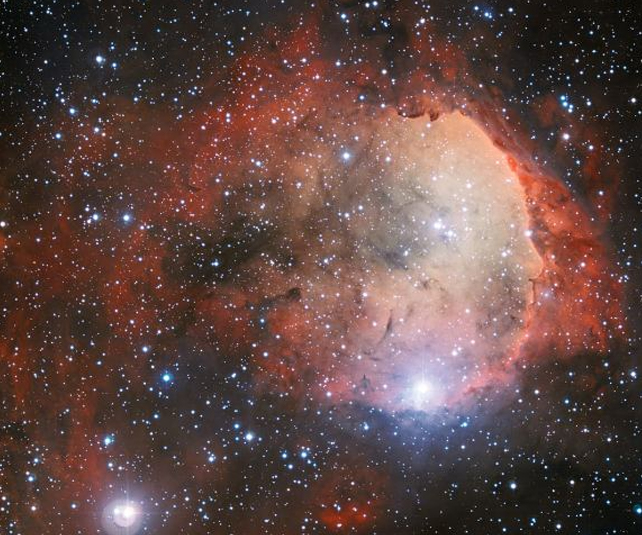
We live in the Universe's "Stelliferous Era," according to the book "The Five Ages of the Universe." In this era, matter is arranged primarily into stars, galaxies, and galaxy clusters. Stars produce most of the energy in the Universe and will for a long time. Since stars provide the energy for life, the Stelliferous Era might easily be called the Life Era.
The JWST can gather ancient light from the first stars and galaxies and peer deep inside stellar cocoons to show us how stars are born. The results are fascinating scientific understandings, but along with answering our scientific questions, the JWST does something else. It gives context to humanity's existence in the Universe's Life Era.
The Sun is no different than other stars. The same forces drove its birth and evolution, and the Sun would've emitted the same outflows and polar jets as the young stars in this image. Those feedback mechanisms would've shaped the protoplanetary disk that the Earth formed in.
So every time we see images of young stars elsewhere, we learn something about our origins. We're fortunate to have the James Webb Space Telescope to show us these vivid, sweeping vistas of star birth. The gorgeous, exquisite detail transports the mind alongside the eye. We can sit and wonder if around each one, life, or even another civilization, might come into being.
This article was originally published by Universe Today. Read the original article.
